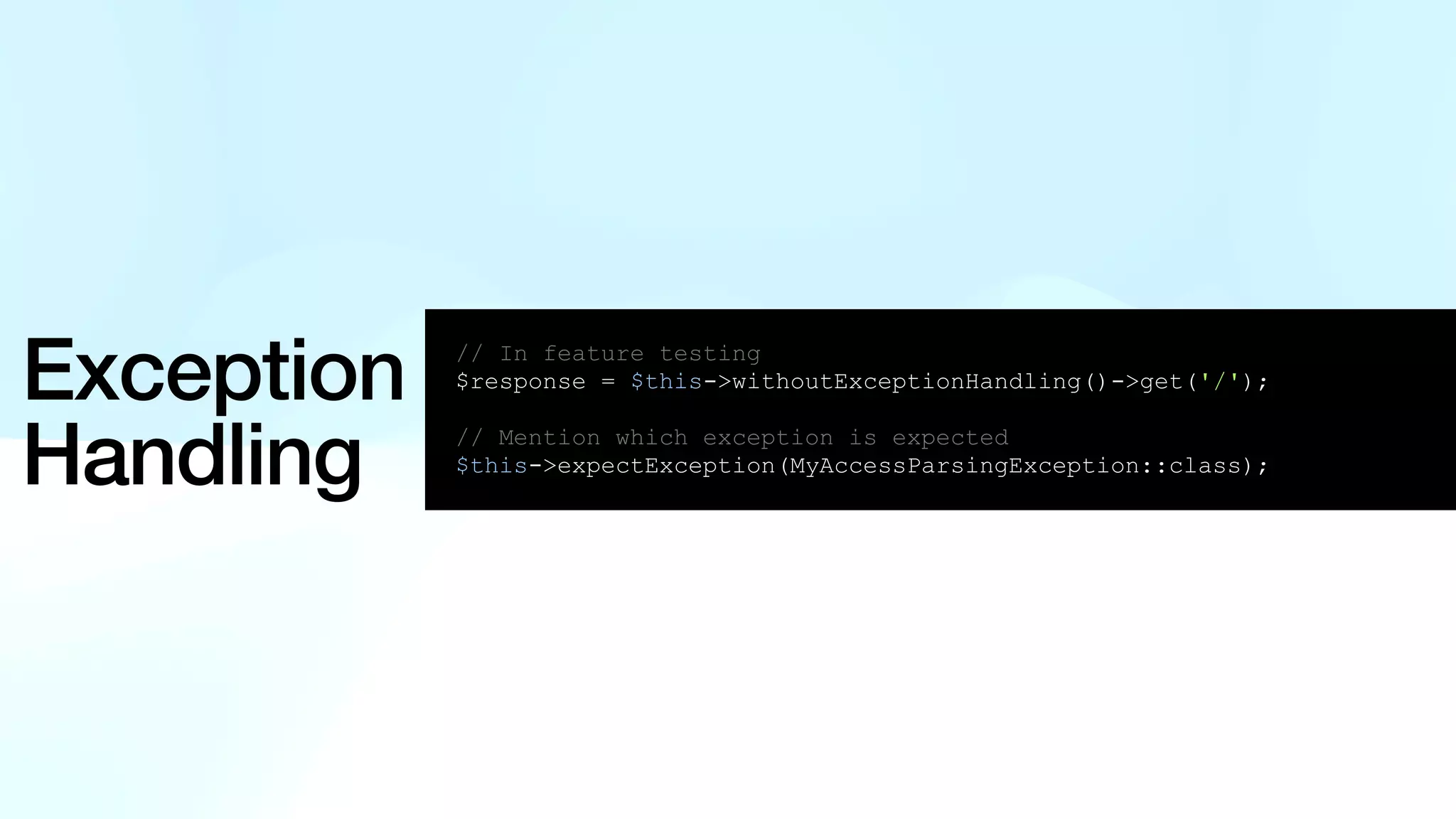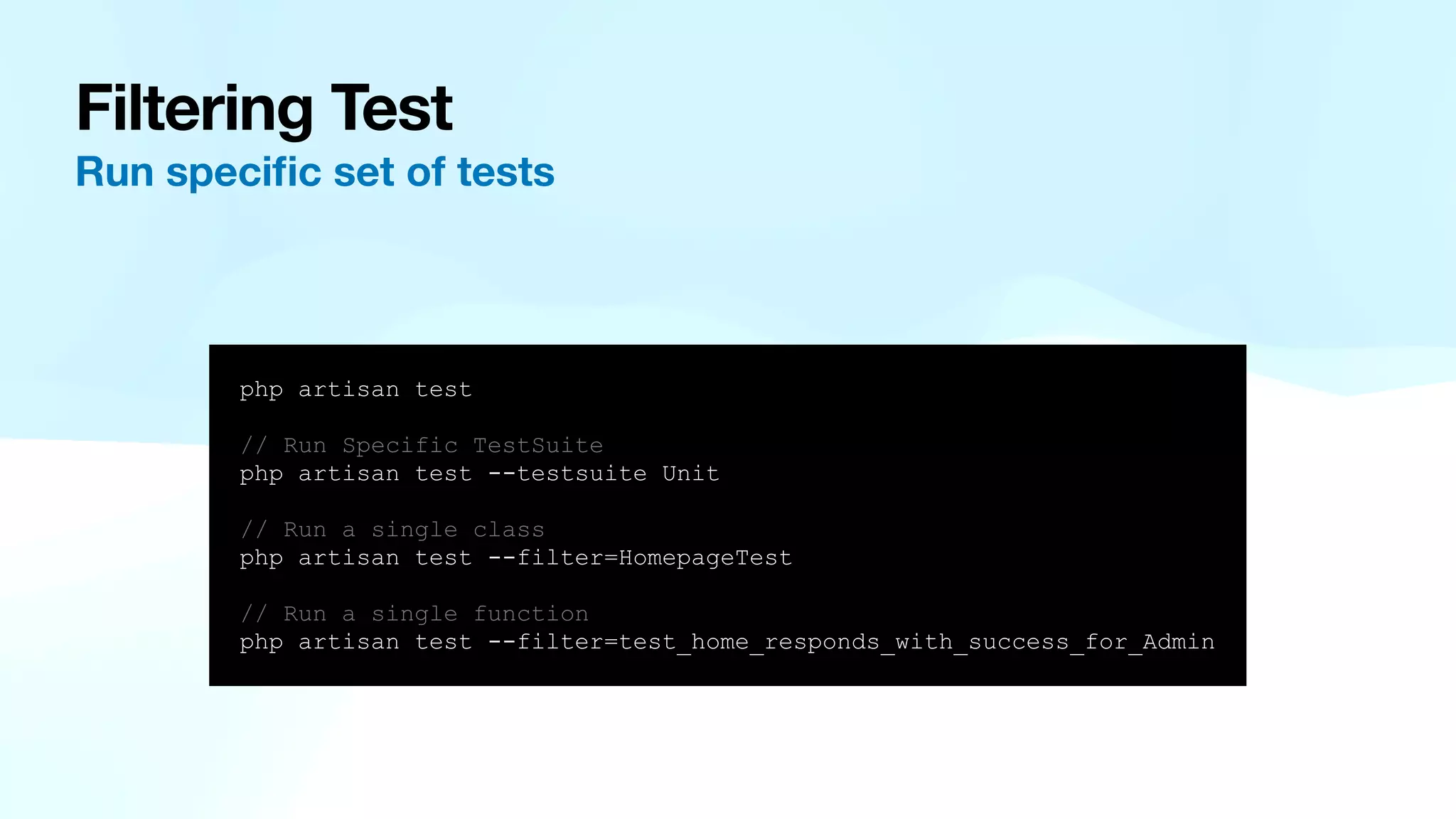The document discusses the importance and methodology of automated testing in Laravel development. It covers various aspects such as what to test, differences between unit and functional testing, and specifics on setting up tests and validating outputs. Additionally, it includes practical examples and code snippets for writing and executing tests in a Laravel environment.

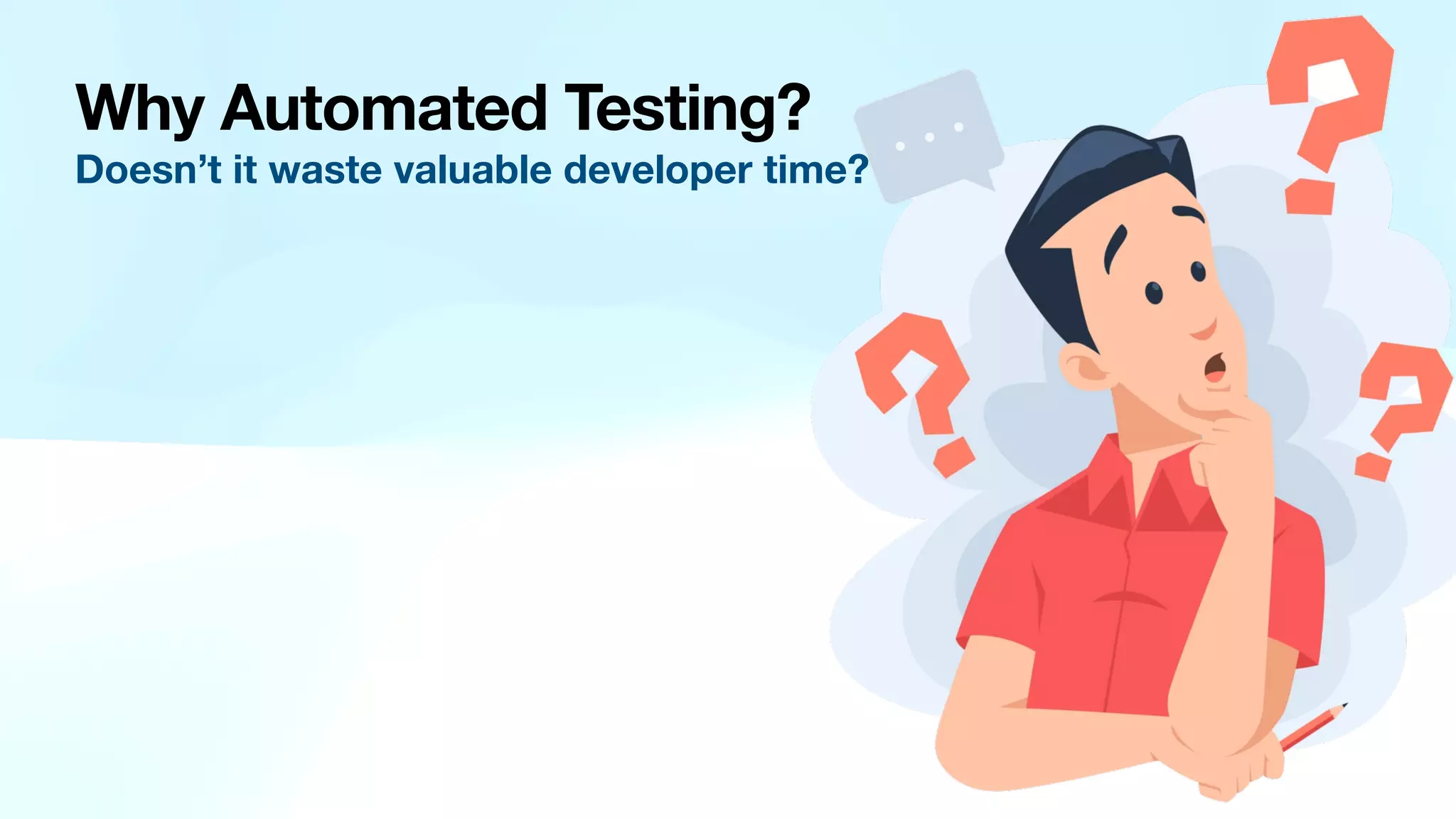
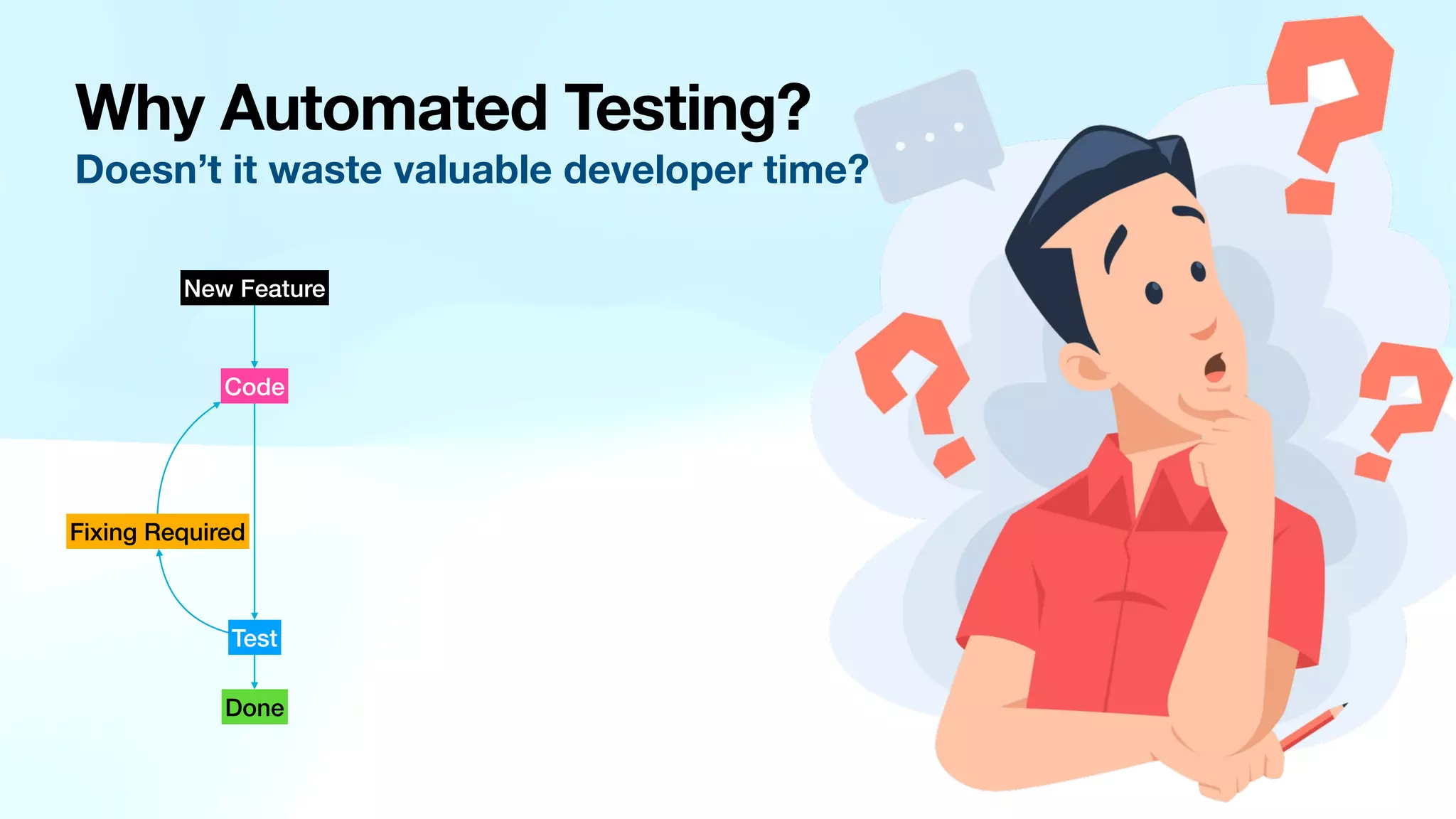
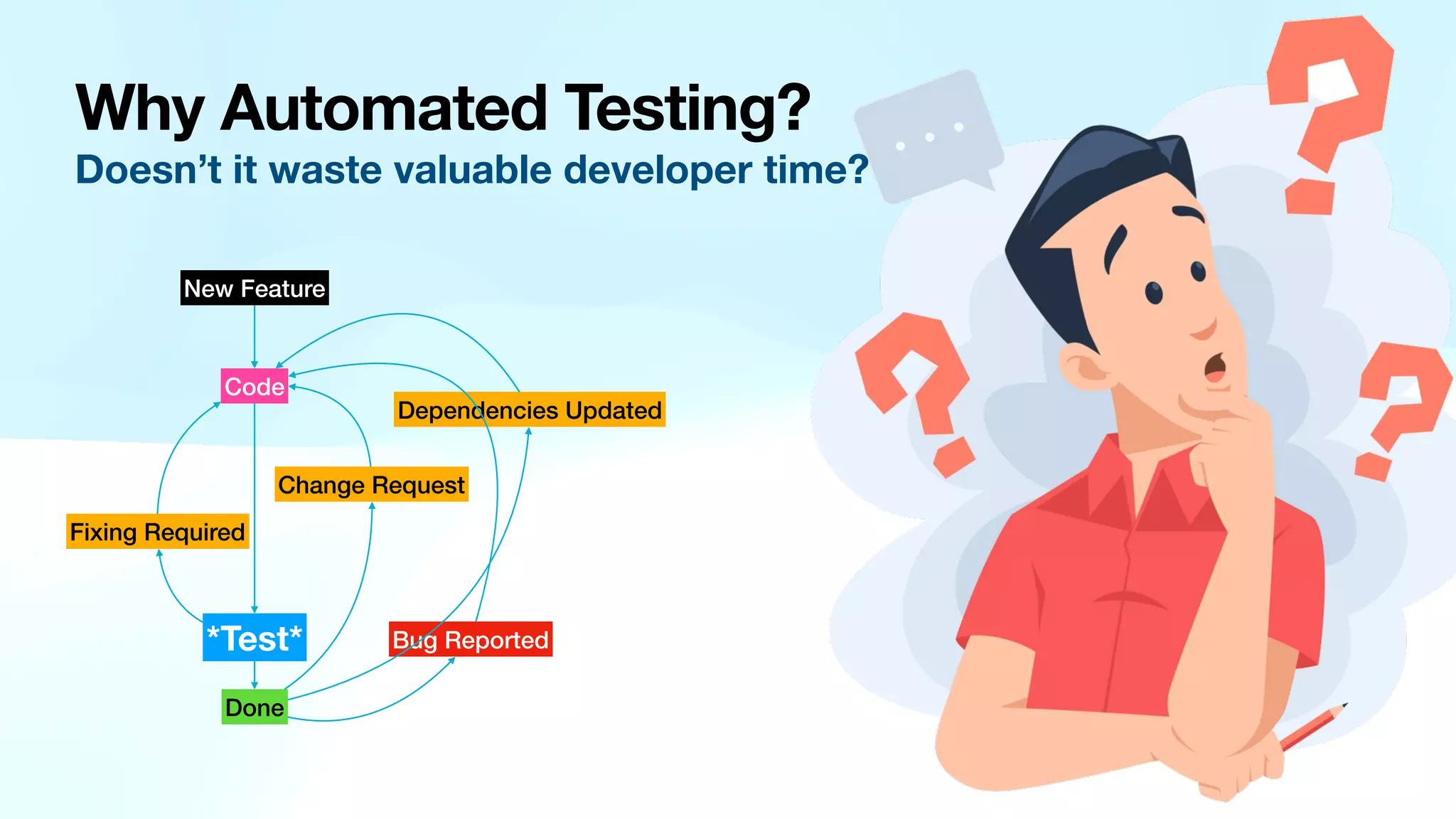
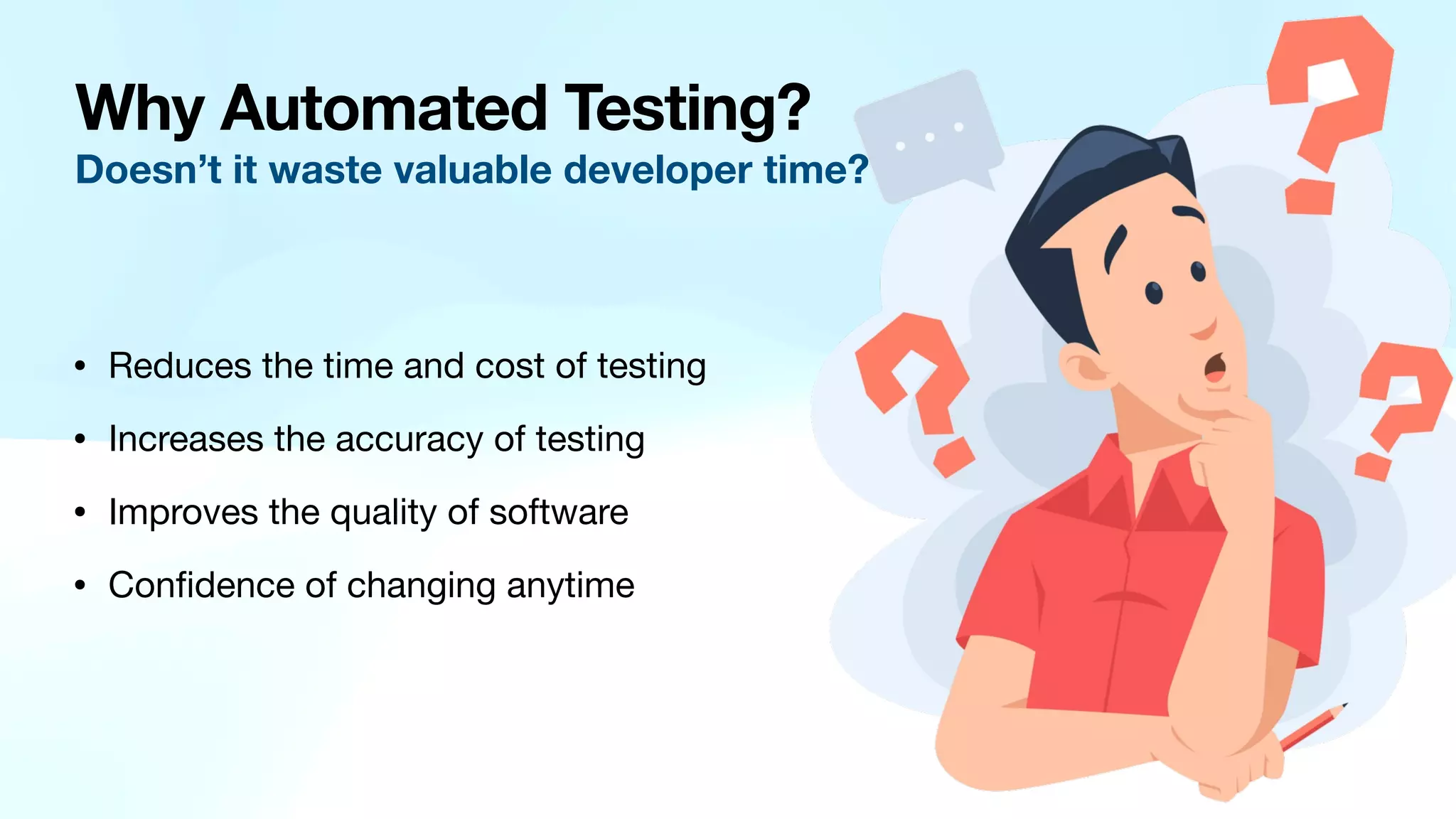

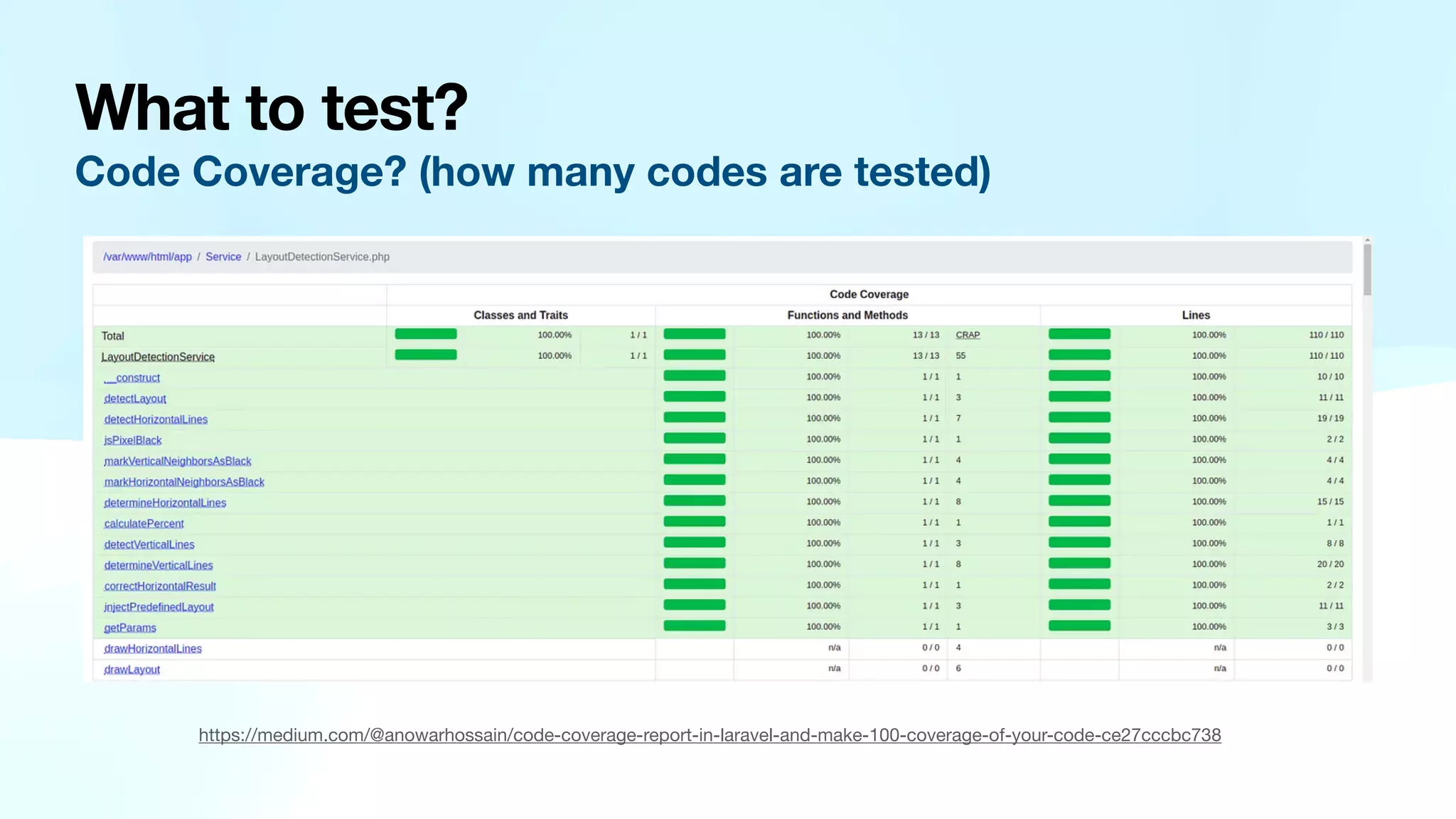
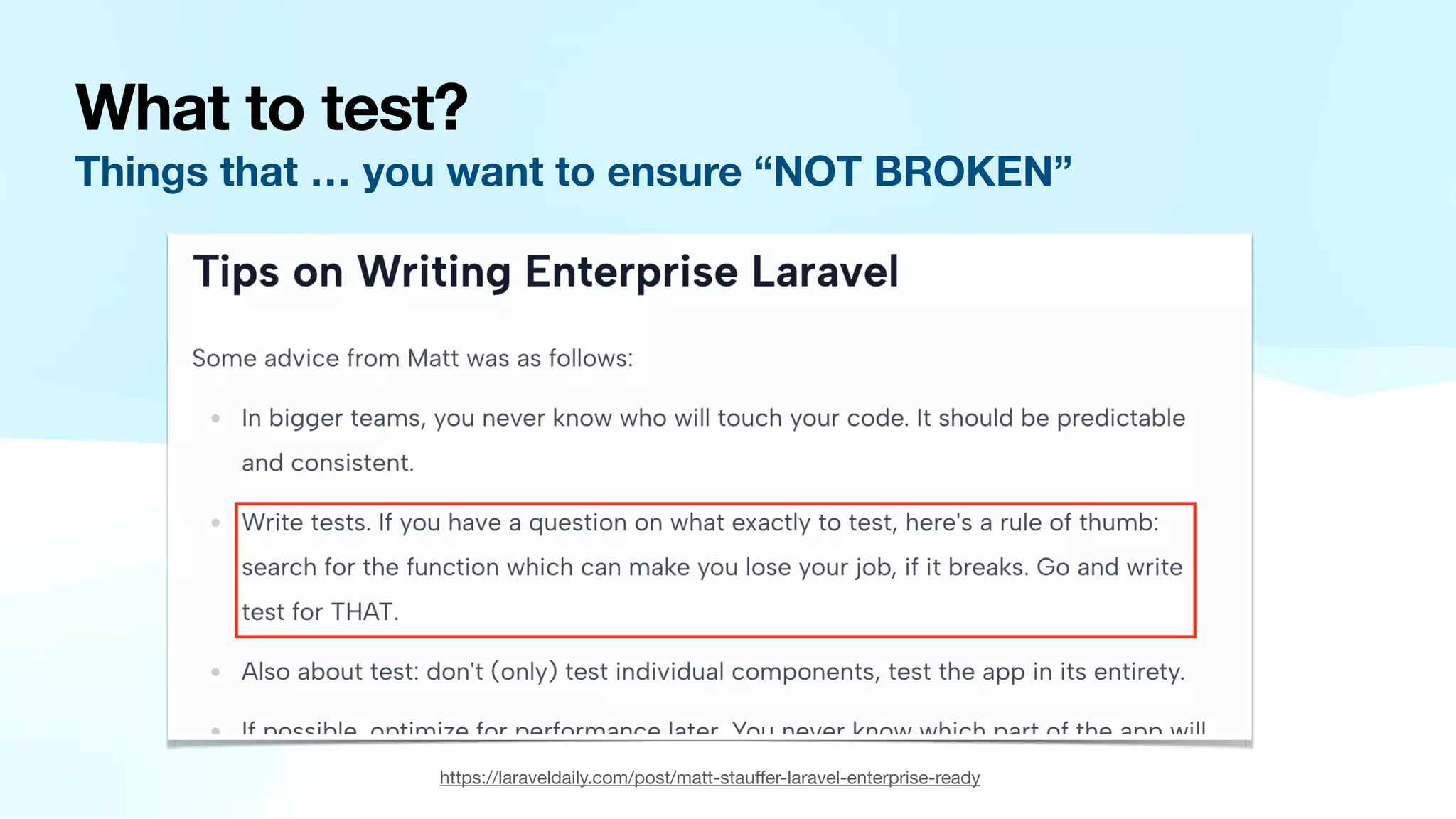
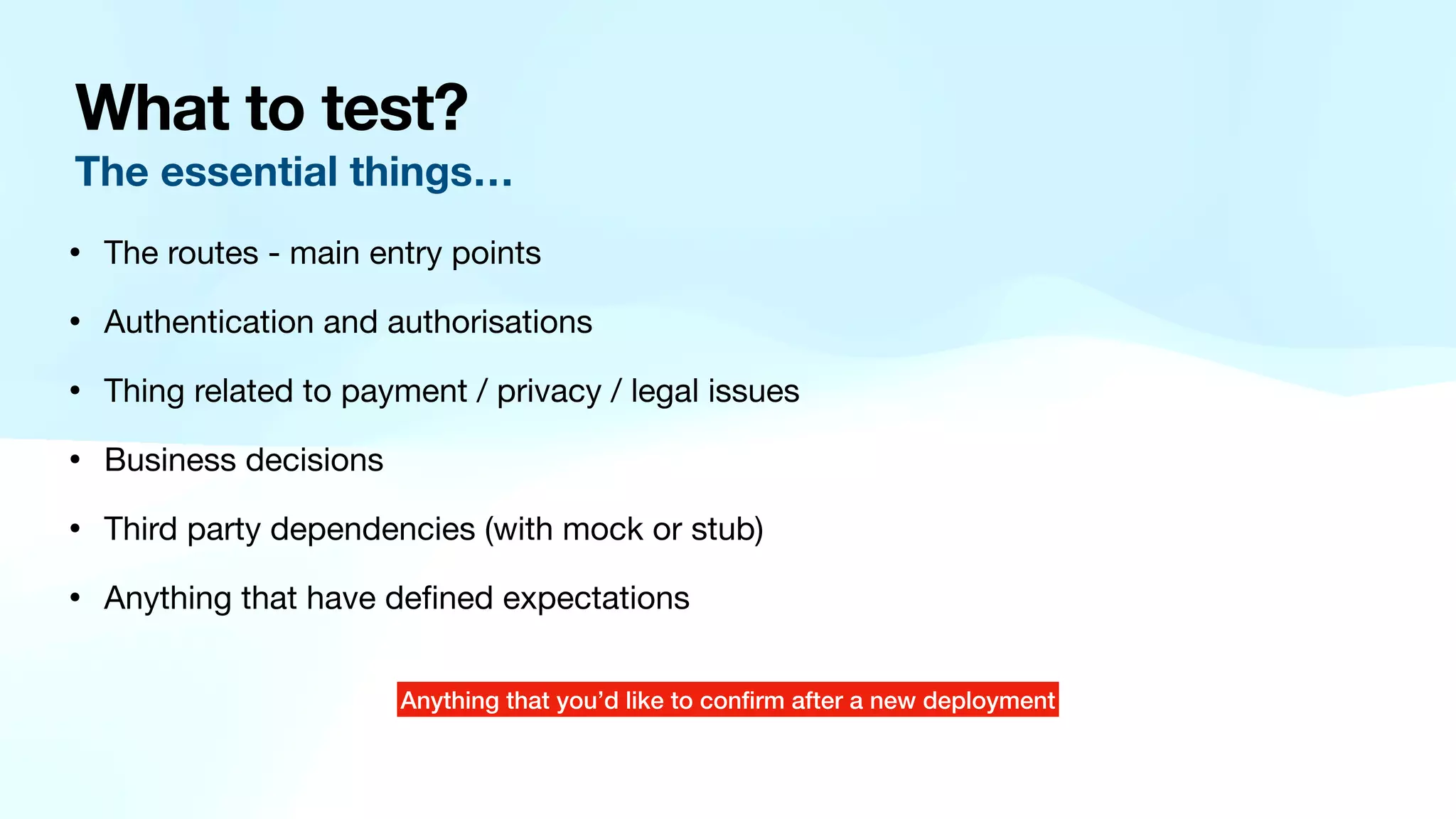

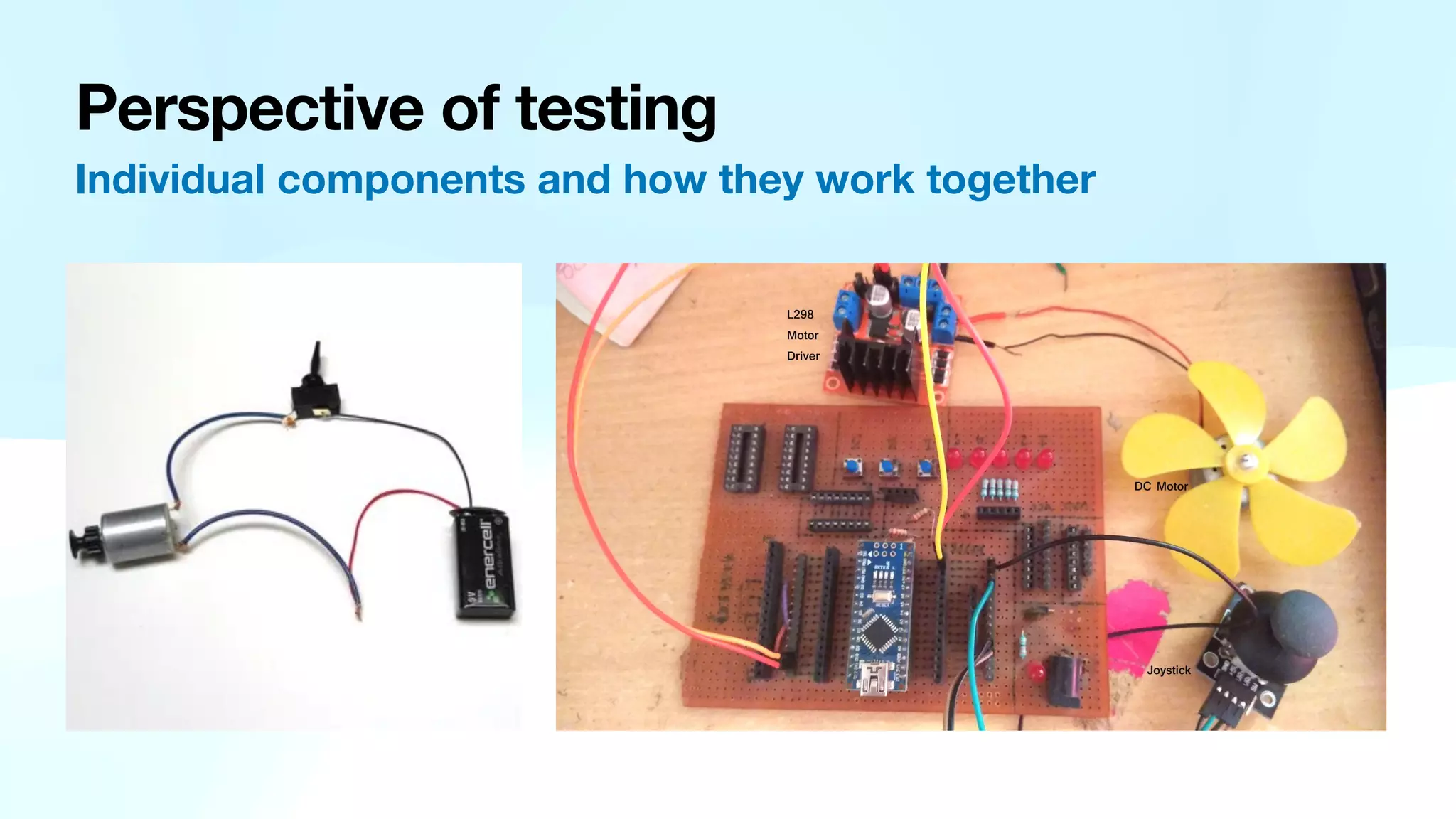
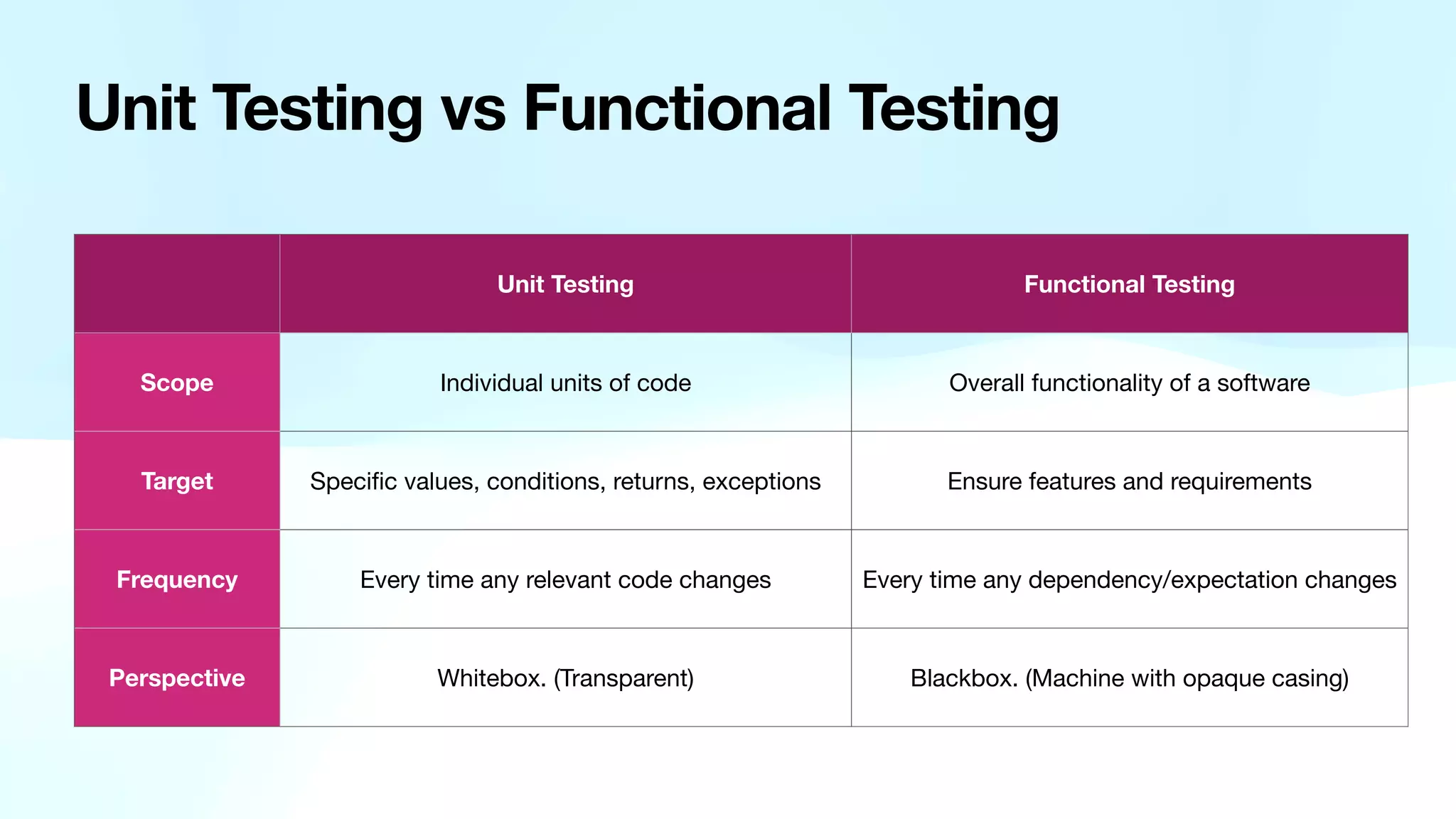
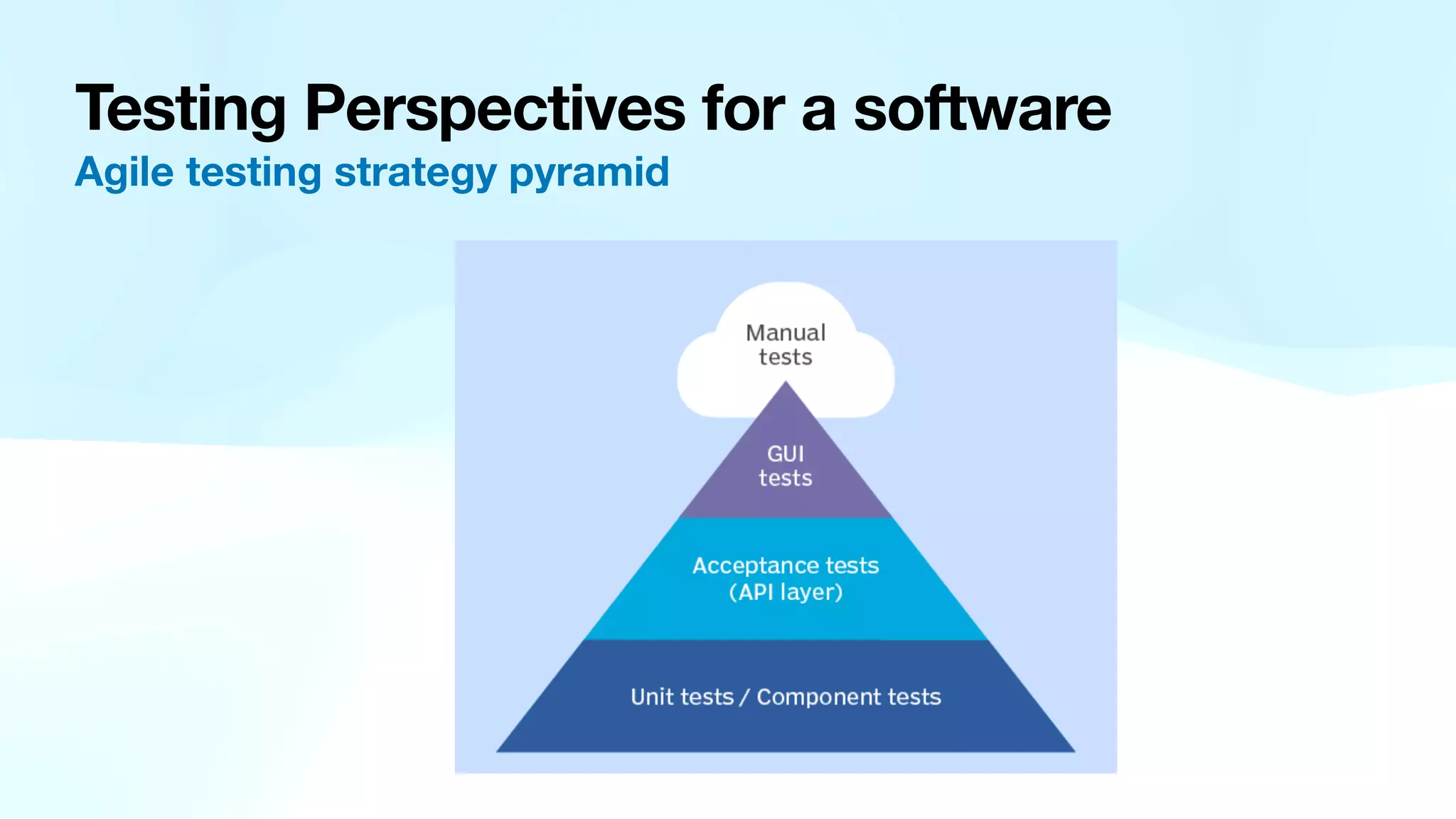
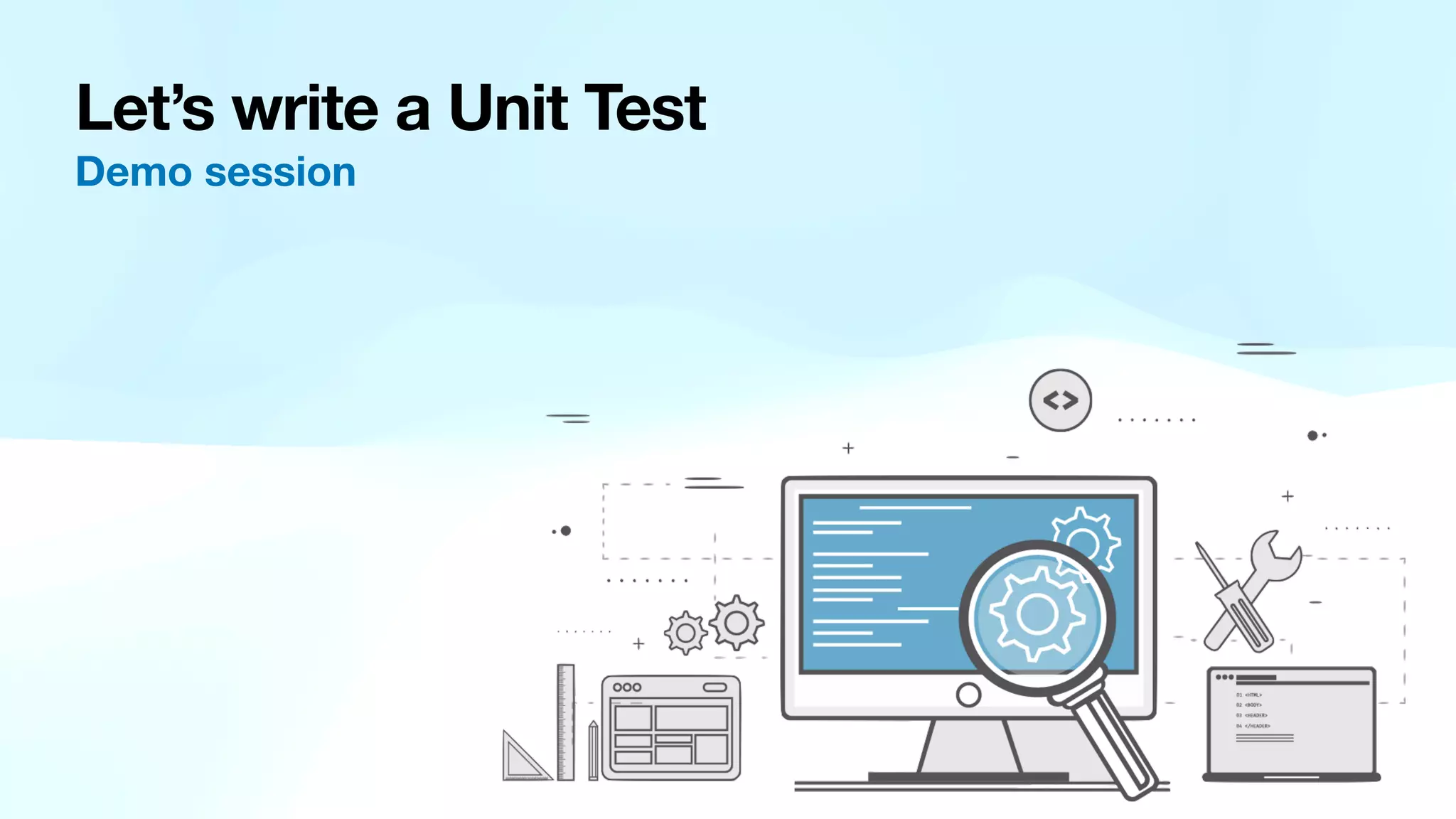
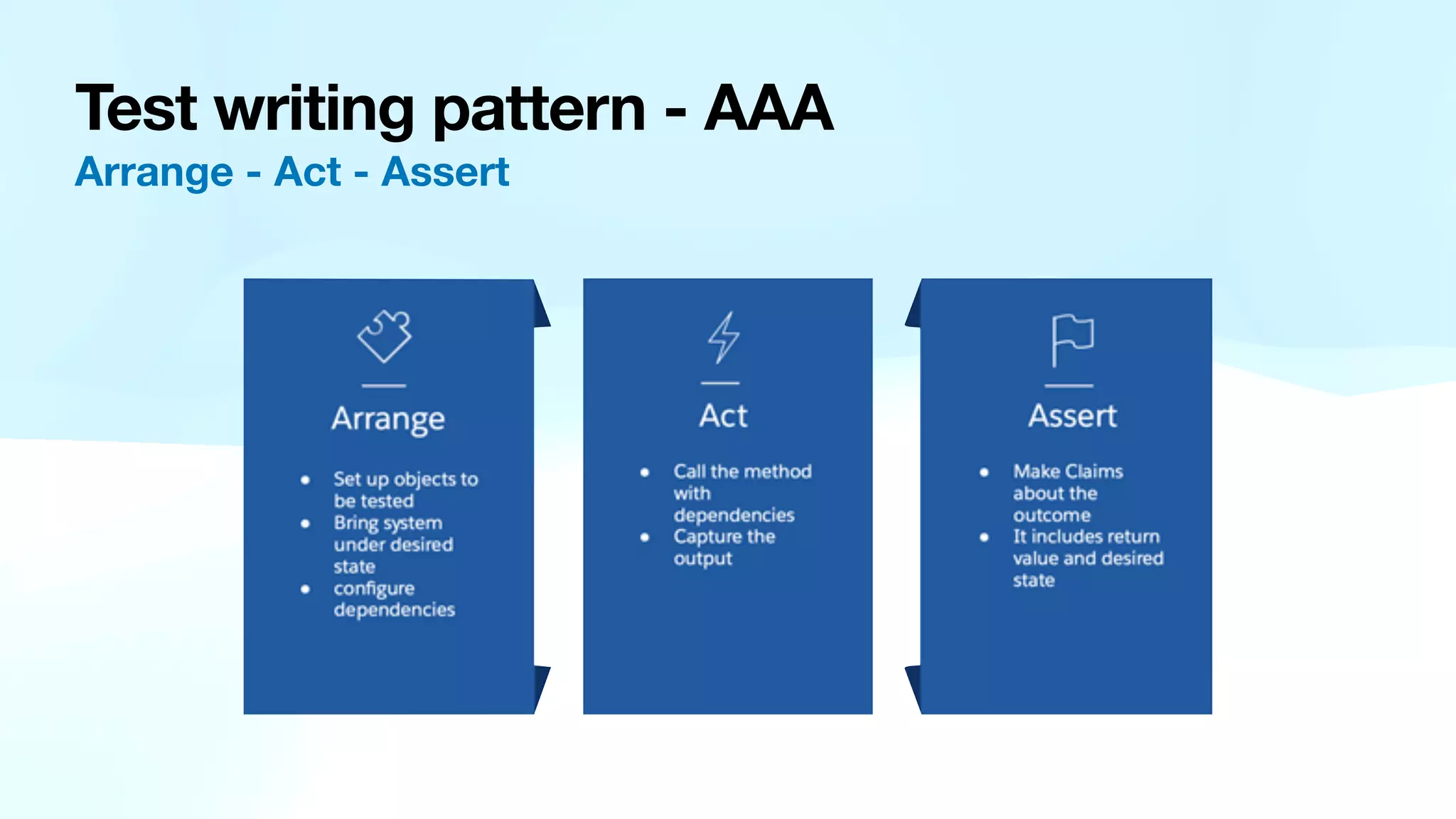
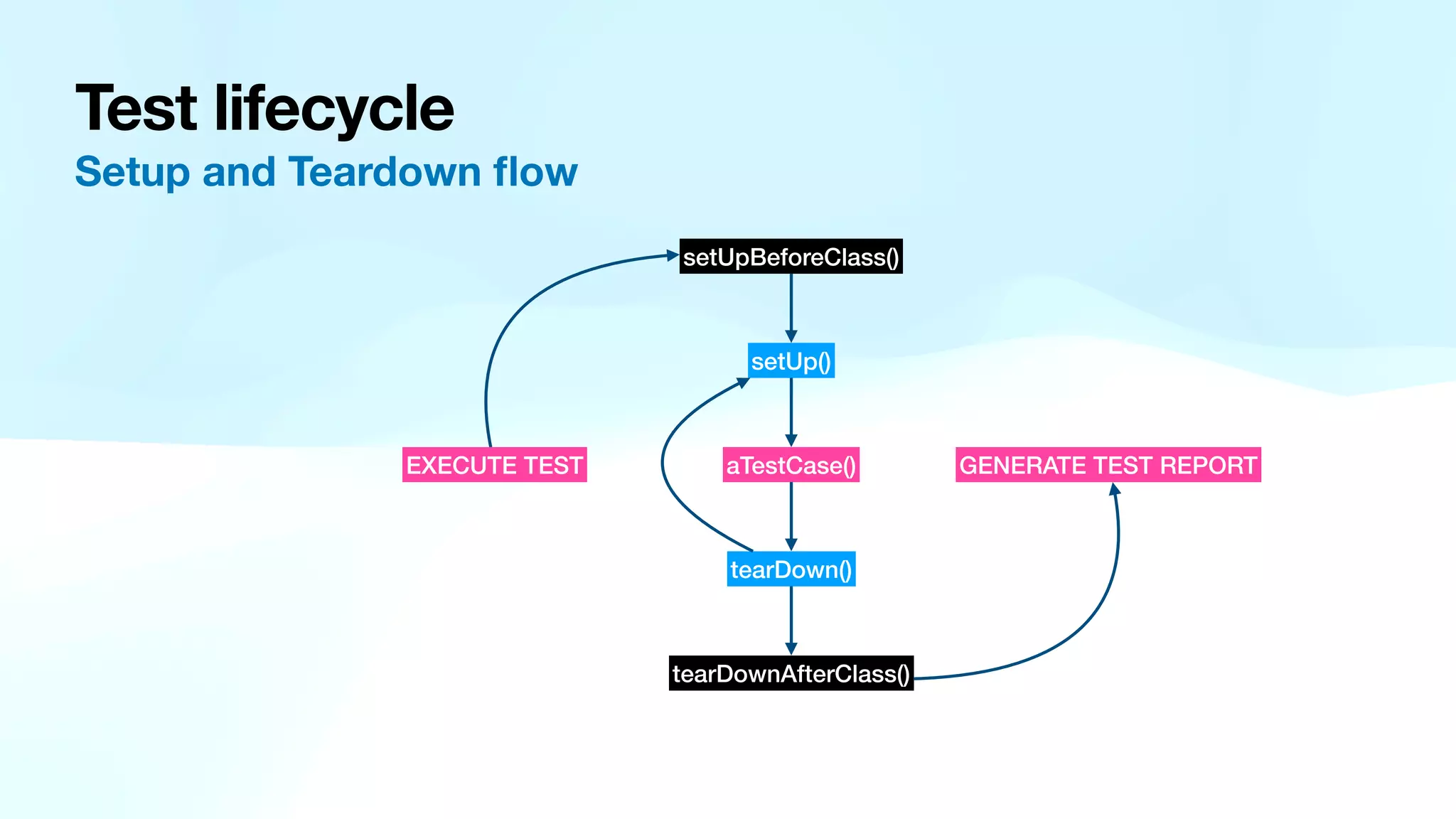
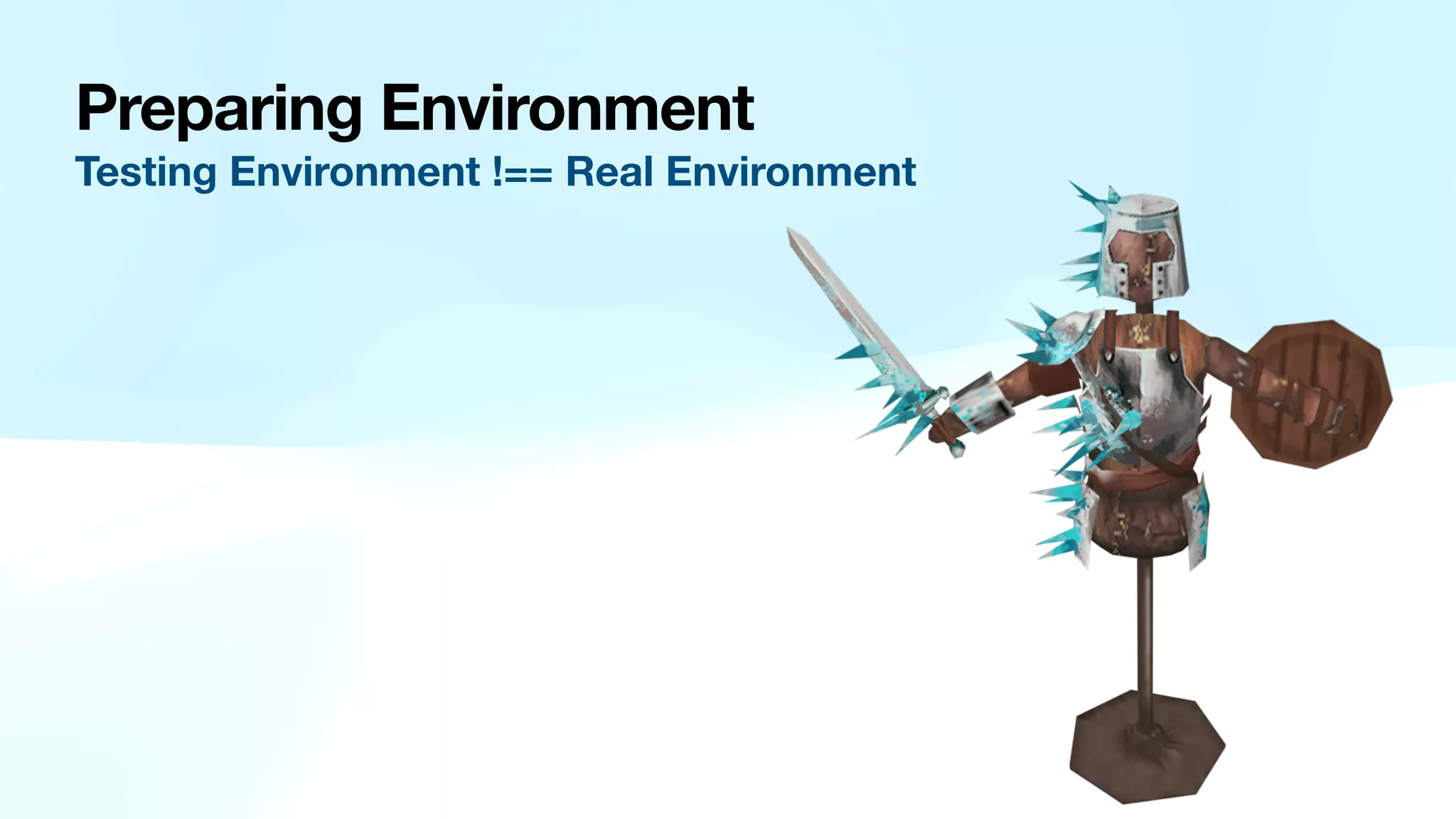
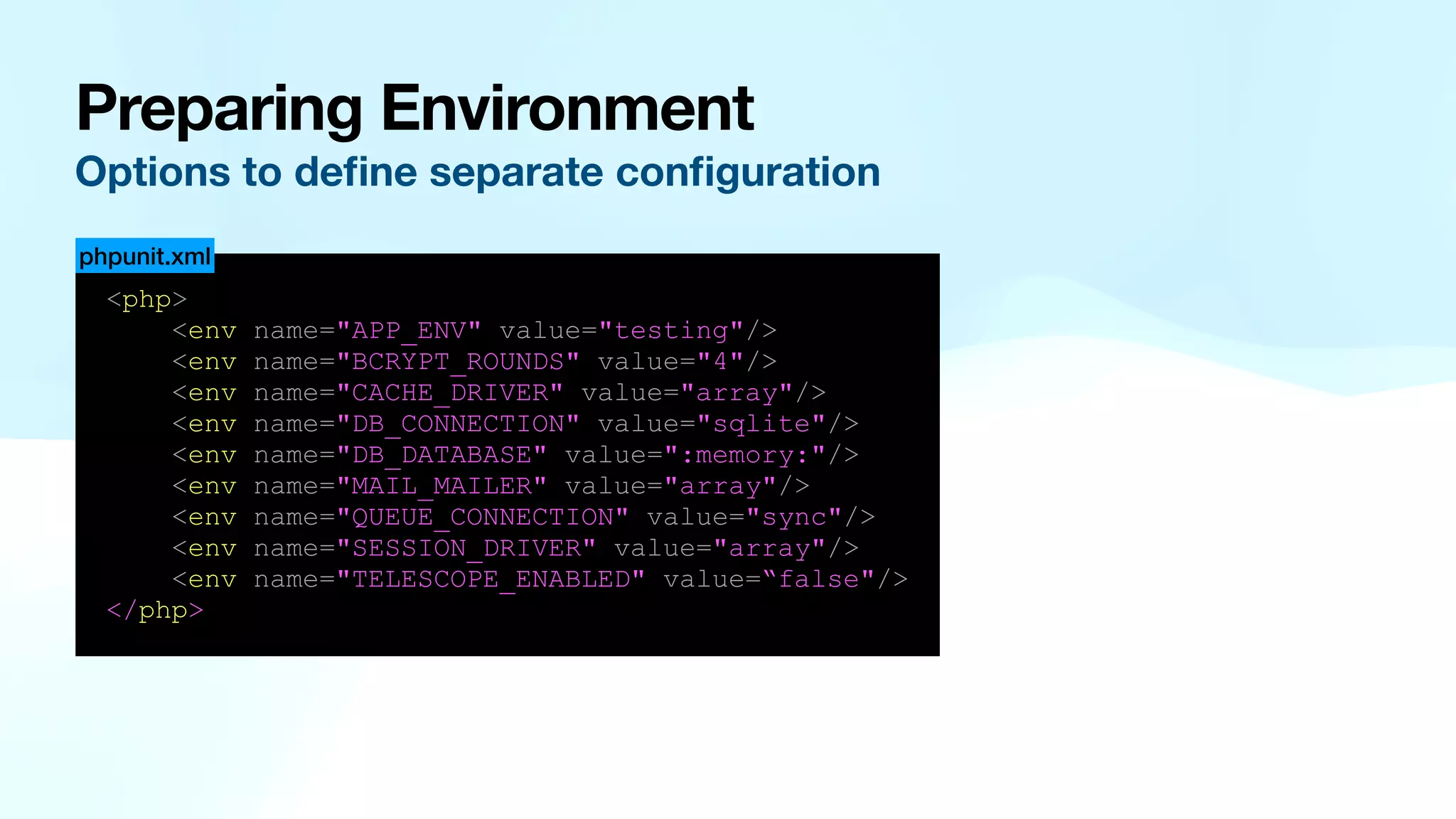
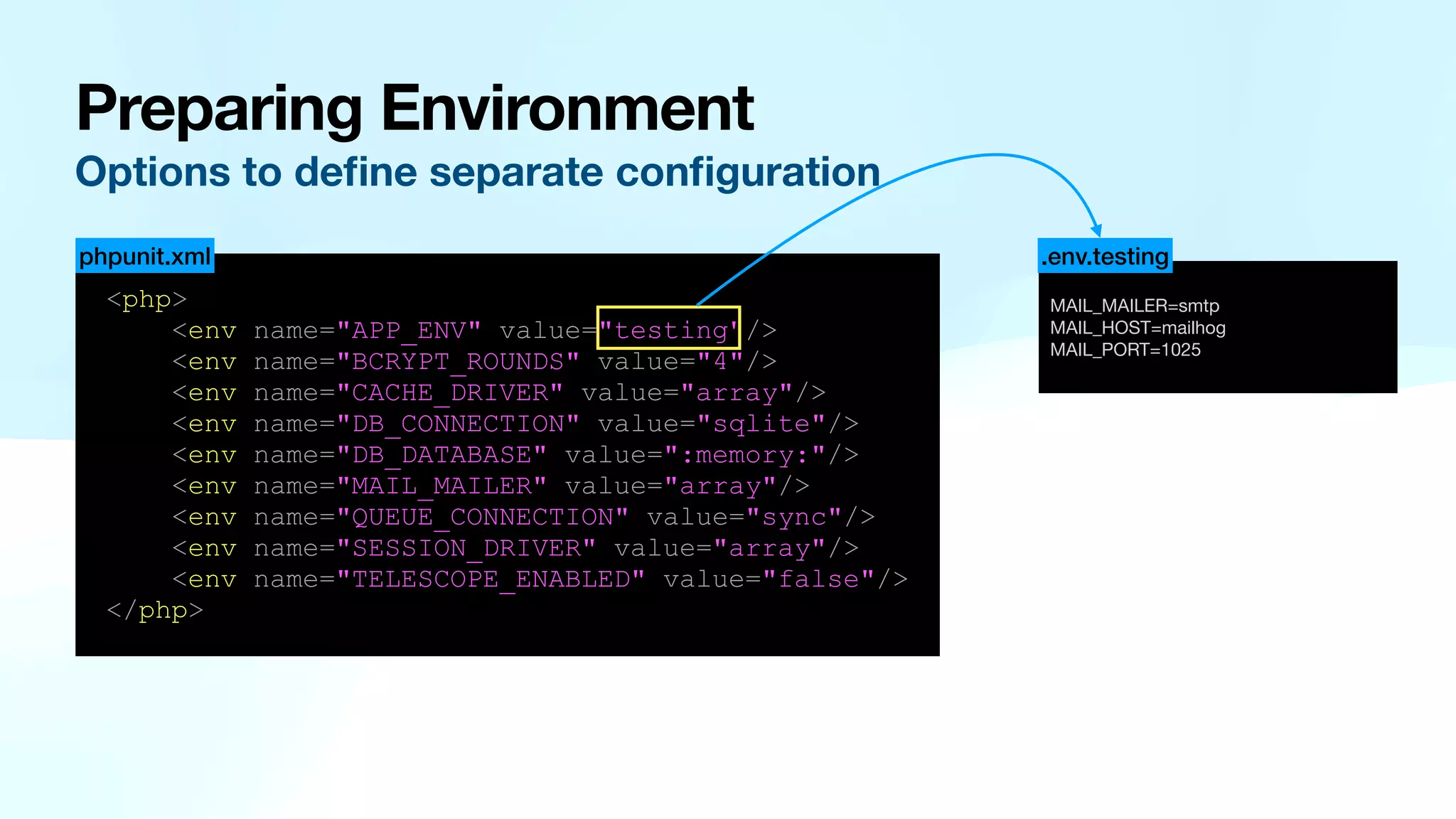
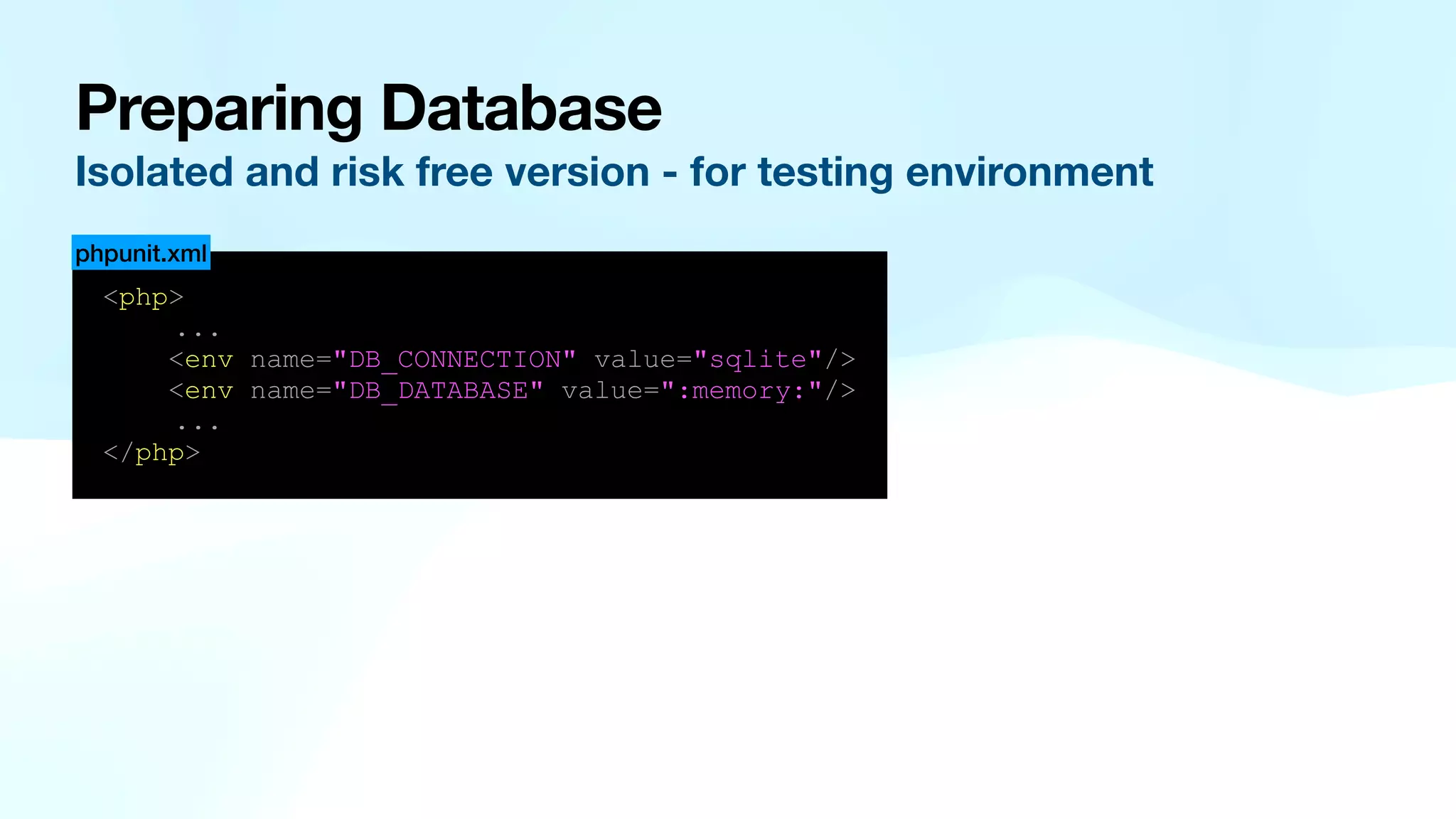
![Preparing Database
Cleanup and prepare for testing new scenario
use IlluminateFoundationTestingDatabaseMigrations;
use IlluminateFoundationTestingRefreshDatabase;
use TestsTestCase;
class HomepageTest extends TestCase
{
use DatabaseMigrations, RefreshDatabase;
public function test_something_with_predefined_data()
{
// Run the DatabaseSeeder...
$this->seed();
// Run an array of specific seeders...
$this->seed([
AreaListSeeder::class,
DocumentCategoriesSeeder::class,
]);
}
// ...
Execute Migrations before running test
Cleanup DB after running test
Stage a prede
fi
ned scenario in DB](https://image.slidesharecdn.com/laraveltesting-230517114605-15e402bd/75/Testing-in-Laravel-Framework-21-2048.jpg)

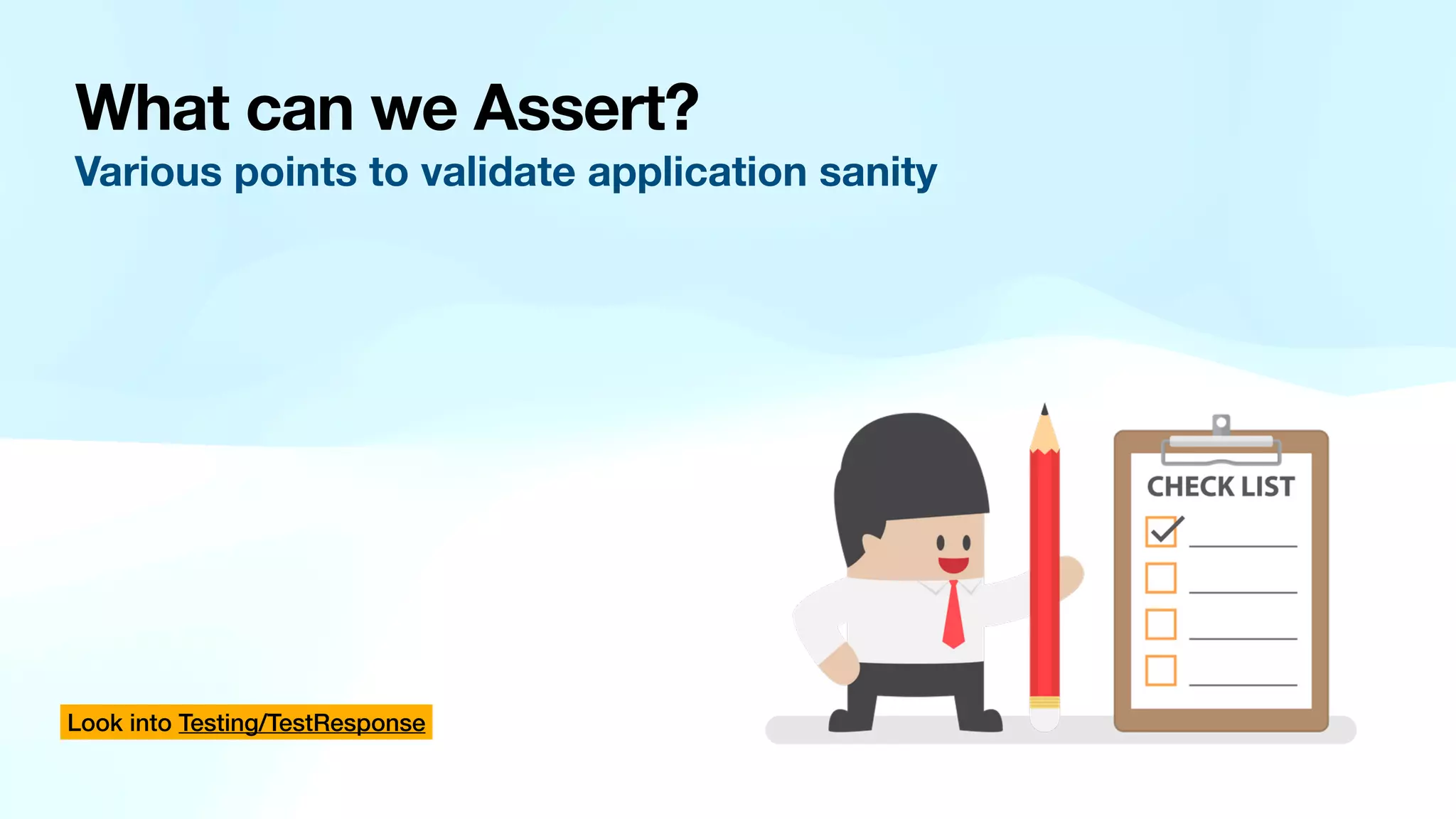
![Check if
expected text
is showing in
page
$response = $this->actingAs($user)->get('/path');
// Find text in response page
$response->assertSee('Dashboard');
$response->assertDontSee('Admin');
// Can be used array of text, also can verify in order
$response->assertSee(['A Menu Item', 'Another Menu Item’]);
// Also can verify if they are showing in order
$response->assertSeeInOrder(['A Menu Item', 'Another Menu Item']);
// All of the above has a *Text() alternative
// that strip_tags the response before compare
$response->assertSeeText('Dashboard');](https://image.slidesharecdn.com/laraveltesting-230517114605-15e402bd/75/Testing-in-Laravel-Framework-24-2048.jpg)
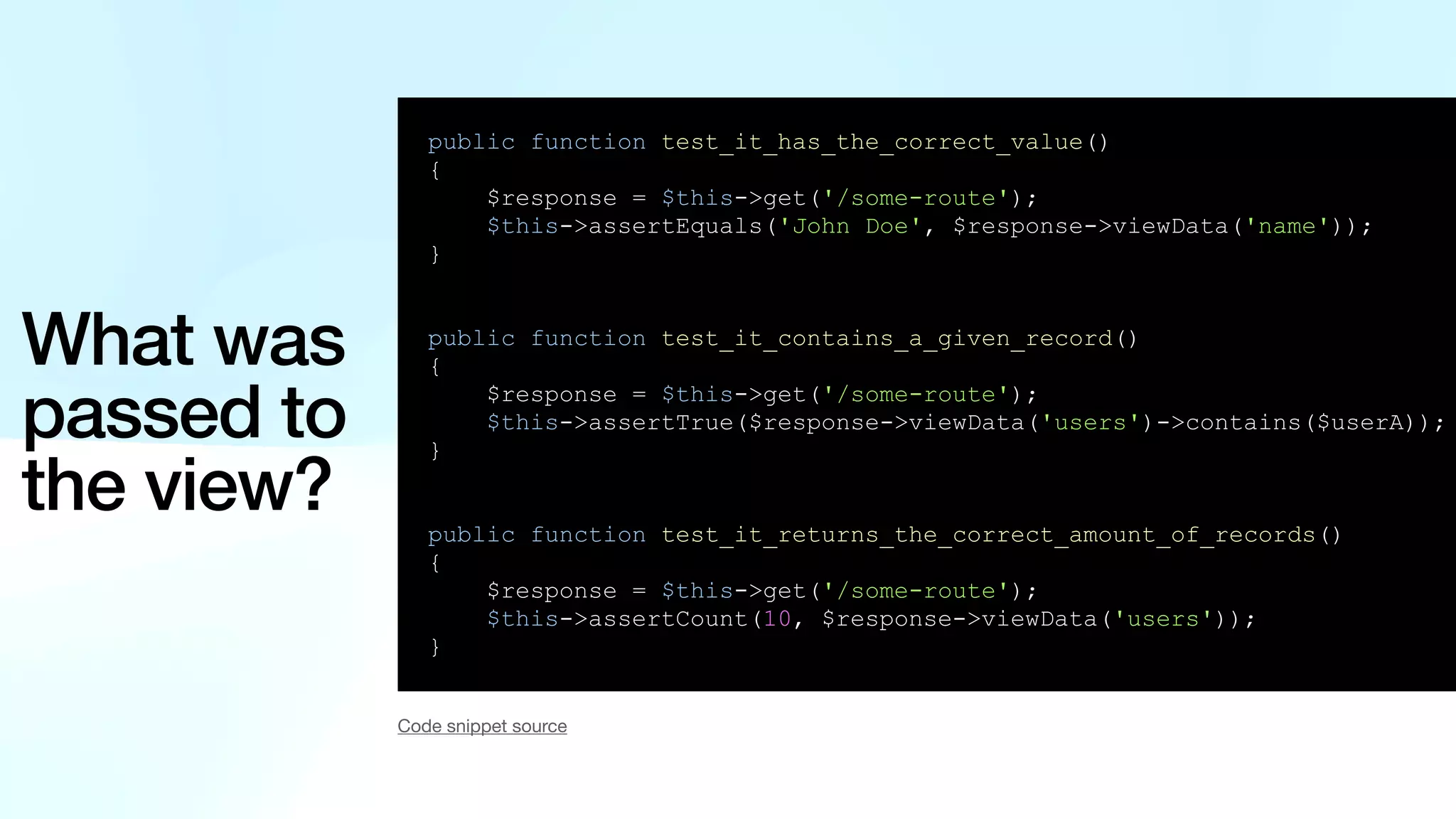
![Validating
API
Responses
$response = $this->postJson('/api/user', ['name' => 'Sally']);
// Validate Response JSON
$response
->assertStatus(201)
->assertJson(['created' => true]);
->assertJsonPath('team.owner.name', 'Darian');
// Fluent JSON Testing
$response
->assertJson(fn (AssertableJson $json) =>
$json->where('id', 1)
->where('name', 'Victoria Faith')
->where('email', fn (string $email)
=> str($email)->is('victoria@gmail.com'))
->whereNot('status', 'pending')
->missing('password')
->etc()
);
// Also there are has, hasMany, hasAll, missing, missingAll etc.
Code snippet source](https://image.slidesharecdn.com/laraveltesting-230517114605-15e402bd/75/Testing-in-Laravel-Framework-26-2048.jpg)
![Validating
Database
records
$user = User::factory()->create();
// Check model existence
$this->assertModelExists($user);
$this->assertModelMissing($user);
// SoftDeleted or not
$this->assertSoftDeleted($user);
$this->assertNotSoftDeleted($user);
// Count records
$this->assertDatabaseCount('users', 5);
// Check specific record
$this->assertDatabaseHas('users', [
'email' => 'sally@example.com',
]);](https://image.slidesharecdn.com/laraveltesting-230517114605-15e402bd/75/Testing-in-Laravel-Framework-27-2048.jpg)
